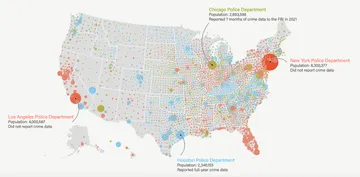The people interviewed for this story include Marie (in our story, we agreed to use only her middle name); Marie’s foster mothers Peggy Cunningham and Shannon McQuery; Marie’s friend Jordan Schweitzer; James Feldman, Marie’s public defender when she was charged with filing a false police report; H. Richmond Fisher, Marie’s attorney in her civil suit against Lynnwood, Washington; Golden, Colorado, police Det. Stacy Galbraith; Westminster, Colorado, Sgt. Edna Hendershot and Sgt. Trevor Materasso; Lakewood, Colorado, police detective Aaron Hassell; Kirkland, Washington, police officer Audra Weber; Lynnwood police Sgt. Jeffrey Mason, Sgt. Rodney Cohnheim and Commander Steve Rider; and Marc O’Leary, who was interviewed at the Sterling Correctional Facility in Colorado. Former Lynnwood police Det. Jerry Rittgarn declined to be interviewed. The description of his background comes from his LinkedIn profile.
We received thousands of pages of documents through public-records requests filed with the following agencies: the police departments in Lynnwood and Kirkland, Washington; the police departments in Golden, Westminster, Aurora and Lakewood, Colorado; and the prosecuting attorney’s offices in Snohomish County, Washington, King County, Washington, and Jefferson County, Colorado.
The records obtained through these requests included investigative reports filed by detectives in Lynnwood and elsewhere; crime-scene photos and surveillance footage collected by the various law-enforcement agencies; the two case reviews of how the Lynnwood police handled the investigation of Marie’s rape report; and video of Marc O’Leary being interviewed by police after his arrest in Colorado.
Words or thoughts attributed to anyone in this story are drawn from these interviews or documents.
We reviewed Marie’s civil suit against Lynnwood, which included such legal exhibits as the medical report from the day she reported being raped and case notes from Project Ladder, the transitional housing program to which she belonged.
Other reporting included pulling transcripts of television news coverage from when Marie was raped and later charged; having court transcripts prepared from when O’Leary was sentenced in Colorado; reviewing grant documents for Project Ladder; and mining the criminal-justice literature for expert views on how rape investigations should be conducted.
We consulted police training guidelines by various organizations, including the International Association of Chiefs of Police and End Violence Against Women International.
Specific statistics
“Rapes by strangers were uncommon — maybe about 13 percent of cases.” From the National Intimate Partner and Sexual Violence Survey, 2011
“Only about one-fifth to one-third of rapes get reported to police, national surveys show.” From National Crime and Victimization Survey, 2014 and National Violence Against Women Survey, 2006
“Between one-fourth to two-thirds of rapists are serial attackers, studies show.” From JAMA Pediatrics, December 2015 and Violence and Victims, Vol 17, 2002 by David Lisak and Paul M. Miller.
“But most recent research suggests that false reporting is relatively rare. FBI figures show that police annually declare around 5 percent of rape cases unfounded, or baseless. Social scientists examining police records in detail and using methodologically rigorous standards cite similar, single-digit rates.” From research and studies summarized in a Department of Justice-funded study, Policing and Prosecuting Sexual Assault in Los Angeles City and County, 2012 by Cassia Spohn and Katharine Tellis and from an analysis by ProPublica and The Marshall Project of FBI Uniform Crime Reporting program data, 2008-2012.
To determine the rate of rape crimes declared unfounded, or groundless, by law enforcement agencies, we analyzed Uniform Crime Reporting data collected by the Federal Bureau of Investigation. We examined five years of the "Offenses Known and Cleared by Arrest" data to smooth yearly fluctuations common in crime reporting. We excluded agencies that did not report crime statistics in any given month, as well as those that reported no crimes of any kind in a year. We also restricted our examination to only those agencies that reported at least one rape over this timespan.
To calculate the rate, we summed the number of unfounded rapes and divided it by the number of reported rapes. We ran this calculation for all departments that met our criteria on a national level. We also ran the same calculation for Washington state law enforcement agencies that cover cities of the same size as Lynnwood to account for possible variations due to the size of a jurisdiction or local laws.
